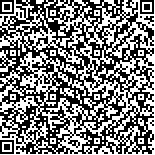| Quote
: |
王若君,陈建华,张军,黄燕,王永炎.应用logistic回归模型预测急性缺血性脑卒中发生概率的病例对照研究[J].湖南中医药大学学报英文版,2017,37(11):1238-1242.[Click to copy
] |
|
| |
|
|
| This paper
:Browser 3896times Download 1980times |
| 应用logistic回归模型预测急性缺血性脑卒中发生概率的病例对照研究 |
| 王若君,陈建华,张军,黄燕,王永炎 |
| (暨南大学中医学院中医临床基础教研室, 广东 广州 510632;川北医学院药学院药理教研室, 四川 南充 637000;广州中医药大学第二临床医学院, 广东 广州 510120;中国中医科学院, 北京 100700) |
| 摘要: |
| 目的 通过分析急性缺血性脑卒中病人发病的影响因素,建立发病概率预测模型,为缺血性脑卒中提供早期防治依据。方法 采用病例对照研究方法,进行统计学分析,应用logistic回归分析建立发病概率预测模型并计算ROC曲线(受试者工作特征曲线receiver operating characteristic curve,ROC)进行评价。结果 病例组超急性期血清N末端脑钠肽前体(NT-proBNP)、星形胶质细胞特异性蛋白(S100B)、超敏C反应蛋白(Hs-CRP)、溶血磷脂酸(LPA)的水平均高于对照组,金属基质蛋白酶-9(MMP-9)与对照组比较差异无统计学意义;眼底动脉硬化(AS)、LPA通过筛选进入logistic回归模型,计算ROC曲线下面积达0.976 1。结论 NT-proBNP、S100B、Hs-CRP、LPA均可较好地预测急性缺血性脑卒中的发生,LPA和AS的logistic回归模型能较为准确地预测缺血性脑卒中的发病概率。 |
| 关键词: 急性缺血性卒中 logistic回归模型 眼底动脉硬化 溶血磷脂酸 |
| DOI:10.3969/j.issn.1674-070X.2017.11.017 |
| Received:July 28, 2017 |
| 基金项目:第43期中国博士后科学基金会基金资助项目课题“急性缺血性卒中急性期证候演变规律与细胞因子相关性研究”(20080430860);“十一五”国家科技支撑计划重大项目“缺血性卒中综合防治方案和疗效评价的示范研究”课题(2006BA104A02)。 |
|
| A Case Control Study of Predicting Probability for Acute Ischemic Stroke Applying the Logistic Regression Model |
| WANG RuoJun,CHEN Jianhua,ZHANG Jun,HUANG Yan,WANG Yongyan |
| (College of Traditional Chinese Medicine, Jinan University, Guangzhou, Guangdong 510632, China;North Sichuan Medical College, Nanchong, Sichuan 637000, China;The Second Clinical Medical School, Guangzhou University of Chinese Medicine, Guangzhou, Guangdong 510120, China;China Academy of Chinese Medical Science, Beijing 100700, China) |
| Abstract: |
| Objective To analyze the influencing factors of ischemic stroke, and establish the prediction model of morbidity, so that can provide evidence for ischemic stroke prevention before disease onset. Methods A case-control study was adopted for statistical analysis. Then the conditional logistic regression method was used to build up predictive model and ROC method was utilized to evaluate predictive effect of this model. Results The main risk factors of ischemic stroke included N-terminal brain natriuretic peptide in hyperacute phase (NT-proBNP), astrocyte specific protein (S100B), high sensitive C reactive protein (Hs-CRP), lysophosphatide acid (LPA) were higher than the control group, while matrix metalloproteinase-9 (MMP-9) had no significant difference. Eyeground arteriosclerosis and LPA were selected into the logistic regression model, and the ROC area under the curve reaches 0.976 1. Conclusion NT-proBNP, S100B, Hs-CRP, LPA could predict the morbidity of diseases preferably, and the logistics regression model including variables of LPA and eyeground arteriosclerosis can predict probability for acute ischemic stroke accurately. |
| Key words: acute ischemic stroke logistic regression model eyeground arteriosclerosis lysophosphatidic acid |
|

二维码(扫一下试试看!) |
|
|
|
|


